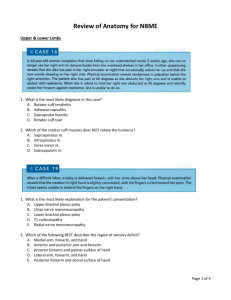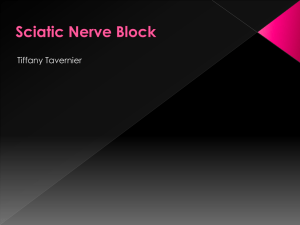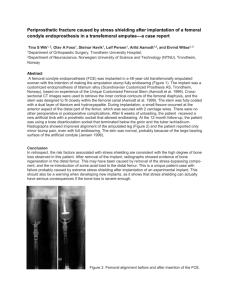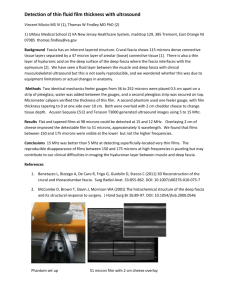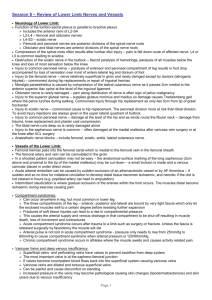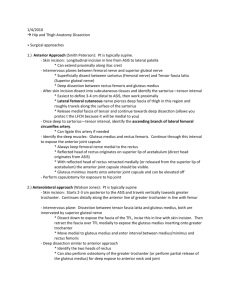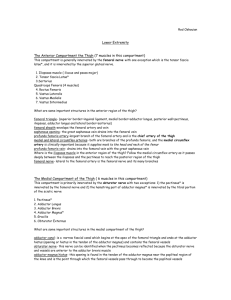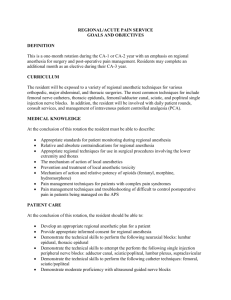CAT FICB echo..
advertisement
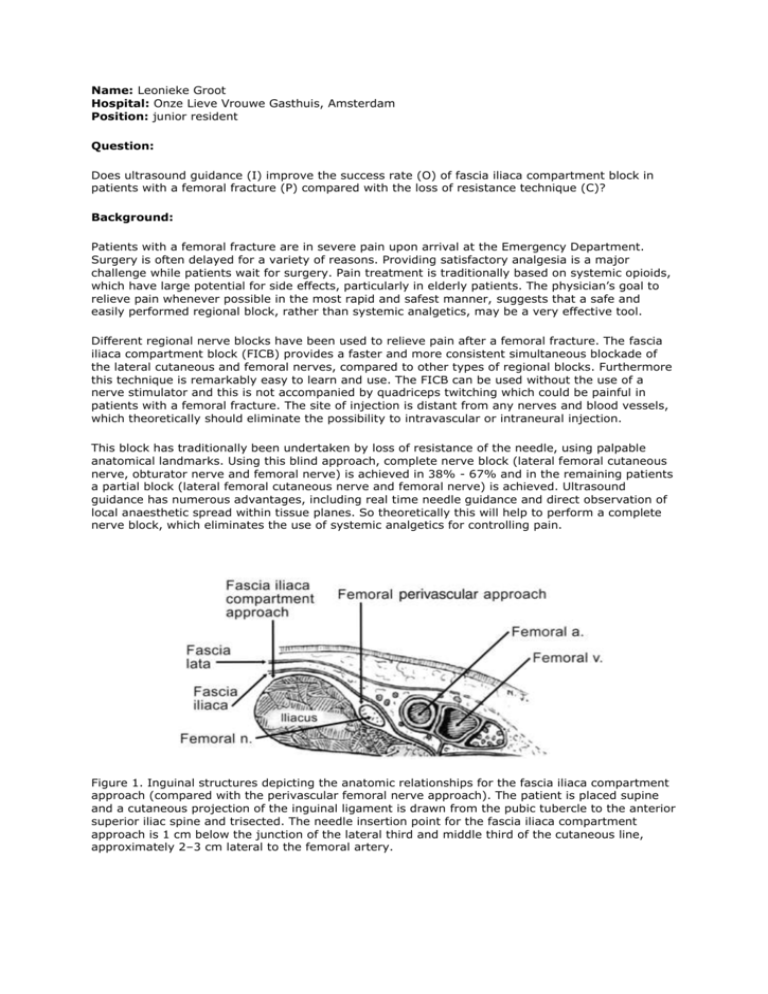
Name: Leonieke Groot Hospital: Onze Lieve Vrouwe Gasthuis, Amsterdam Position: junior resident Question: Does ultrasound guidance (I) improve the success rate (O) of fascia iliaca compartment block in patients with a femoral fracture (P) compared with the loss of resistance technique (C)? Background: Patients with a femoral fracture are in severe pain upon arrival at the Emergency Department. Surgery is often delayed for a variety of reasons. Providing satisfactory analgesia is a major challenge while patients wait for surgery. Pain treatment is traditionally based on systemic opioids, which have large potential for side effects, particularly in elderly patients. The physician’s goal to relieve pain whenever possible in the most rapid and safest manner, suggests that a safe and easily performed regional block, rather than systemic analgetics, may be a very effective tool. Different regional nerve blocks have been used to relieve pain after a femoral fracture. The fascia iliaca compartment block (FICB) provides a faster and more consistent simultaneous blockade of the lateral cutaneous and femoral nerves, compared to other types of regional blocks. Furthermore this technique is remarkably easy to learn and use. The FICB can be used without the use of a nerve stimulator and this is not accompanied by quadriceps twitching which could be painful in patients with a femoral fracture. The site of injection is distant from any nerves and blood vessels, which theoretically should eliminate the possibility to intravascular or intraneural injection. This block has traditionally been undertaken by loss of resistance of the needle, using palpable anatomical landmarks. Using this blind approach, complete nerve block (lateral femoral cutaneous nerve, obturator nerve and femoral nerve) is achieved in 38% - 67% and in the remaining patients a partial block (lateral femoral cutaneous nerve and femoral nerve) is achieved. Ultrasound guidance has numerous advantages, including real time needle guidance and direct observation of local anaesthetic spread within tissue planes. So theoretically this will help to perform a complete nerve block, which eliminates the use of systemic analgetics for controlling pain. Figure 1. Inguinal structures depicting the anatomic relationships for the fascia iliaca compartment approach (compared with the perivascular femoral nerve approach). The patient is placed supine and a cutaneous projection of the inguinal ligament is drawn from the pubic tubercle to the anterior superior iliac spine and trisected. The needle insertion point for the fascia iliaca compartment approach is 1 cm below the junction of the lateral third and middle third of the cutaneous line, approximately 2–3 cm lateral to the femoral artery. Search strategy and outcome: A PubMed search was performed using the following search strategy: - “fascia iliaca block" OR "fascia iliaca compartment block". 53 articles were found. All abstracts were reviewed. Only one was relevant to our question. - "fascia iliaca block" OR "fascia iliaca compartment block" AND "Ultrasonography"[Mesh]. Three articles were found. One of which, the same as mentioned above, was relevant to our question. There was no Mesh term for the fascia iliaca compartment block. The Cochrane Library and BestBETS’s were searched as well. No additional articles are found. Article: Aut-hor, date Patiënt Group Study type Inter vention Comparison Outcomes Results Study Weaknesses Dolan J. 2008 N=40 LOR RCT FICB using LOR FICB using US Sensation anterior, lateral, medial thigh US increases medial and complete loss of sensation (p=.001) Not double blinded Knee extension Hip adduction US increases femoral nerve block (p=.006) and obturator nerve motor block (p=.033) N=40 US Blinded LOR= loss of resistance, US= ultrasound, Level 2B Small group FICB= fascia iliaca compartment block. Conclusion: for the acute management of pain in patients with a femoral fracture, ultrasound guided FICB increased the frequency of sensory loss in the medial aspect of the thigh. Ultrasound guidance also increased the frequency of femoral and obturator motor block. Level of recommendation: B. Comments: although in one small study ultrasound guided fascia iliaca compartment block increased the frequency of femoral and obturator motor block when compared with ‘blind injection’, more studies are needed. Furthermore, they did not measure the pain scores so we don’t know whether ultrasound guidance gives better pain scores than the ‘blind’ technique. Clinical bottom line: in patients with a femoral fracture, ultrasound guidance improves the success rate of fascia iliaca compartment block. This technique should be learned and implemented in our Emergency Departments. Literature: Dolan J, Williams A, Murney E, et al. Ultrasound Guided Fascia Iliaca Block: A Comparison With the Loss of Resistence Technique. Reg Anest Pain Med 2008;33:526-531.
